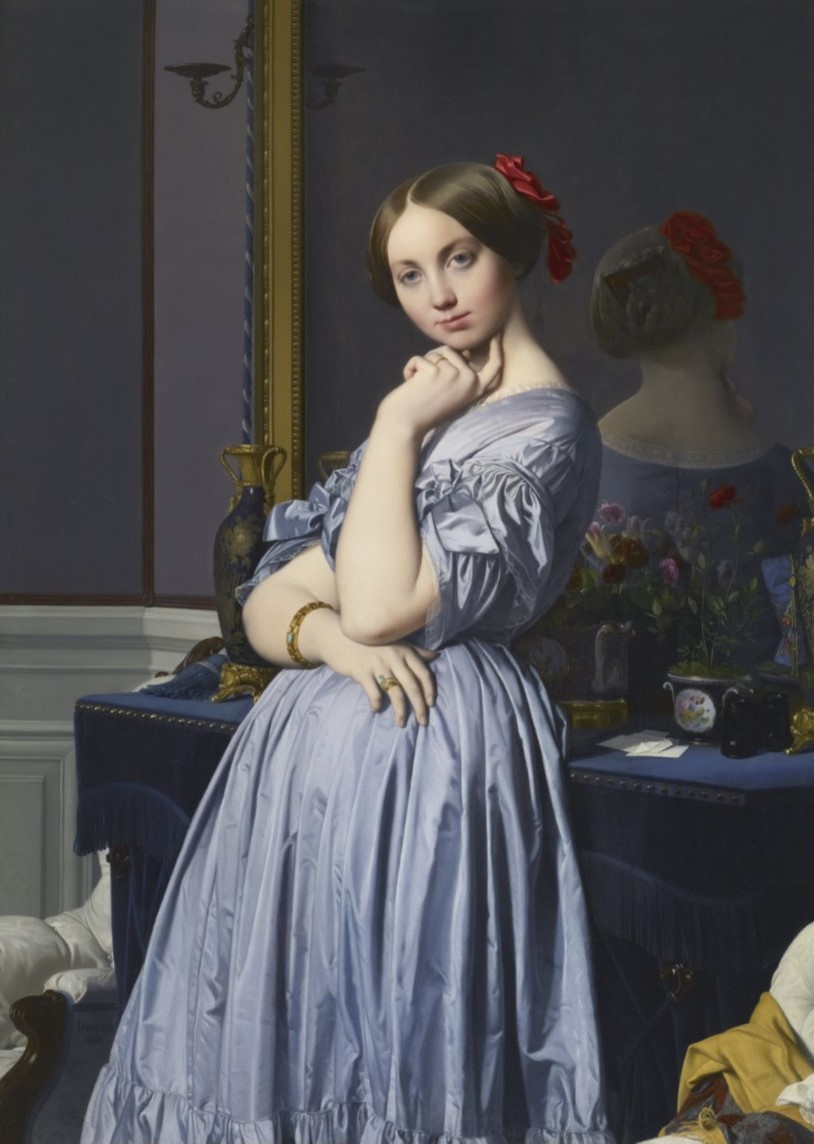Of all Jean-Augusta-Dominique Ingres’s work, I have a preference for his portraits, and for Comtessa Louise-Albertine d’Haussonville in particular. Although I have long found it one of the most captivating paintings ever made, Ingres was initially unhappy with the portrait, asserting he’d failed to convey “all the graces of that charming model.”1 However, ten years later, he did request and obtain its loan for his 1855 retrospective at the Exposition Universelle, Paris, so I assume he warmed to it.
The Comtessa was obviously a lovely young woman, and in Ingres’s depiction, she is startlingly present, her gaze direct and coquettish. The rest of the image is equally compelling – the interior and still life elements add a calm and informal atmosphere, with objects on the mantle casually placed and her shawl thrown over a chair. And as far as I’m concerned, even if the painting were simply of just the dress it would still warrant inclusion, anywhere, anytime, and in any show, of which it would probably be the highlight. Ingres did at least two studies focusing specifically on the folds in the garment, and in the finished portrait, the satin actually feels tangible; one experiences the fabric, the color of which matches the sitter’s eyes, in a tactile way. At a time when photography was still in its infancy, and color photography did not yet exist, Ingres was painting in a photorealist manner which would not become popular until well over a century later.
It’s not only Ingres’s virtuosic painting technique that I admire. I love how he often abstracted the human form as a means to his artistic ends. The figure of the Comtessa reads as anatomically plausible and comes together in such an elegant manner despite her right arm apparently coming out of her side. I’ve read that contemporaneous critics often berated Ingres for these distortions that are obviously not “mistakes,” but examples of his idiosyncratic aesthetic sensibility.
In the mid-1980s, the Frick Collection in New York City mounted Ingres and the Comtessa d’Haussonville, an exhibition dedicated to this single painting. In addition to the portrait itself, fifteen of the sixteen known surviving preliminary drawings and an early oil sketch were also presented. Alas, I did not see this show.
1 Charles Blanc: Ingres: Sa Vie et Ses Ouvrages; Paris (1870), page 145. If Ingres was correct in his assessment, just how beguiling the Comtessa must have been is quite beyond my comprehension.
